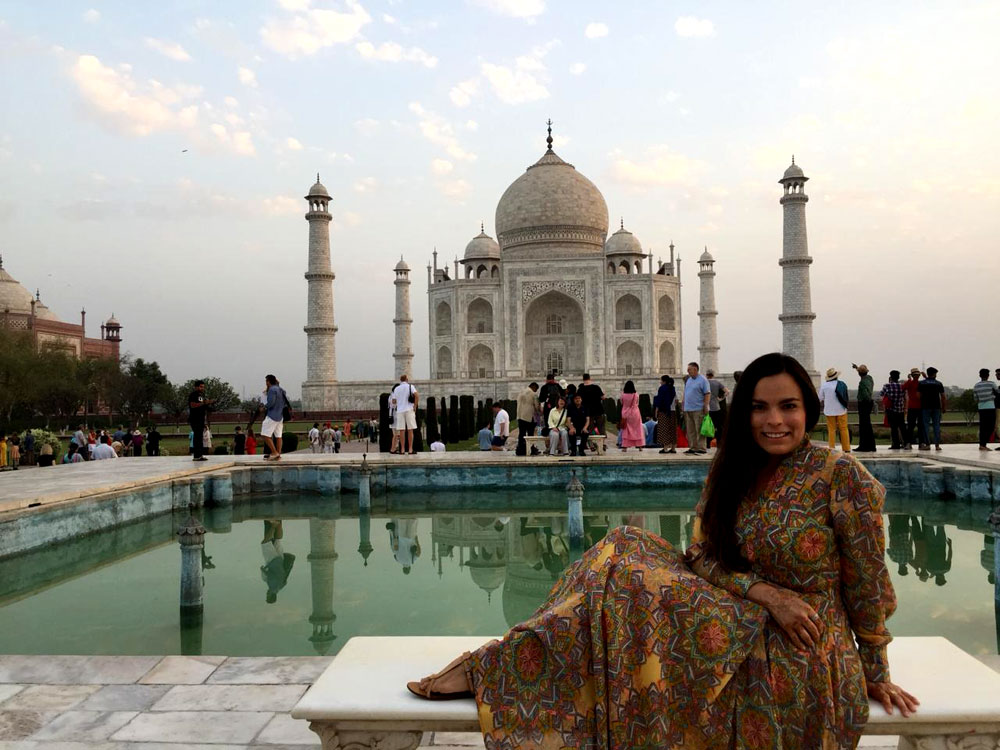If you’re planning a trip to India, you must visit Agra at least once to discover the beauty of the Taj Mahal. Agra features unique monuments that are not only beautiful but also amazing in every way. This unique monument is the Taj Mahal, and it is one of the best monuments dedicated to pure love.
It truly symbolizes eternal love and romance. Millions of people from all over the world visit this magnificent monument to experience the magic of love. This architectural and structural masterpiece is considered one of his seven wonders of the world. It has truly become synonymous with the city’s identity. When we talk about Agra, the first name that comes up is the Taj Mahal. There are many great monuments and palaces from the Mughal era, but this stunning monument built by Emperor Shah Jahan in memory of his beloved wife, Mumtaz Mahal, steals all the glory.
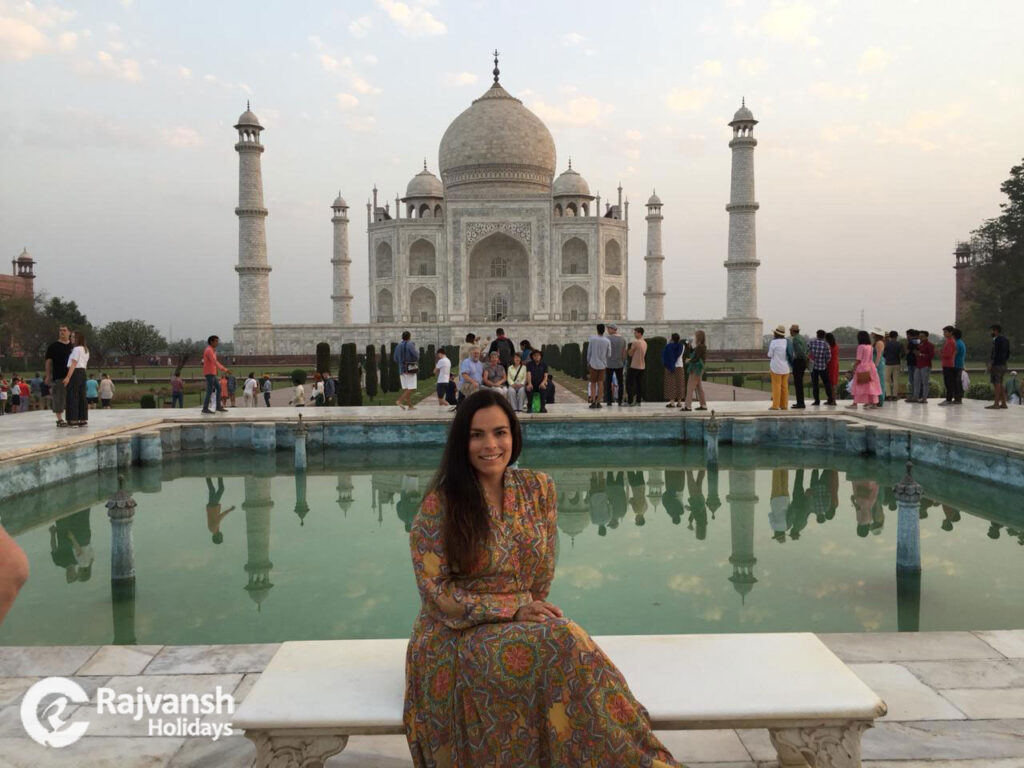
Read below the top 10 reasons why you must visit Agra once in your life
Why visit Agra? Read below the 10 best reasons why you must visit Agra city in India. Book this tour to discover the beauty of the Taj Mahal and other monuments in Agra.
Agra Same Day Tours from Delhi
Taj Mahal Same Day Tour From Delhi
1. Discover Taj Mahal: The Symbol of True Love
One of the marvels of the world, the Taj Mahal is renowned for its unmatched magnificence and is situated majestically on the banks of the Yamuna River. The most valuable piece of Muslim art is the Taj Mahal, a massive monument built by Shah Jahan between 1631 and 1648 as a loving remembrance of his wife. In order to fully appreciate the monument’s architectural beauty and historical value, you should explore both its inside and outside.
If you want to explore the beauty of Taj Mahal under the moonlight and stars, then this will be a unique experience in your life.
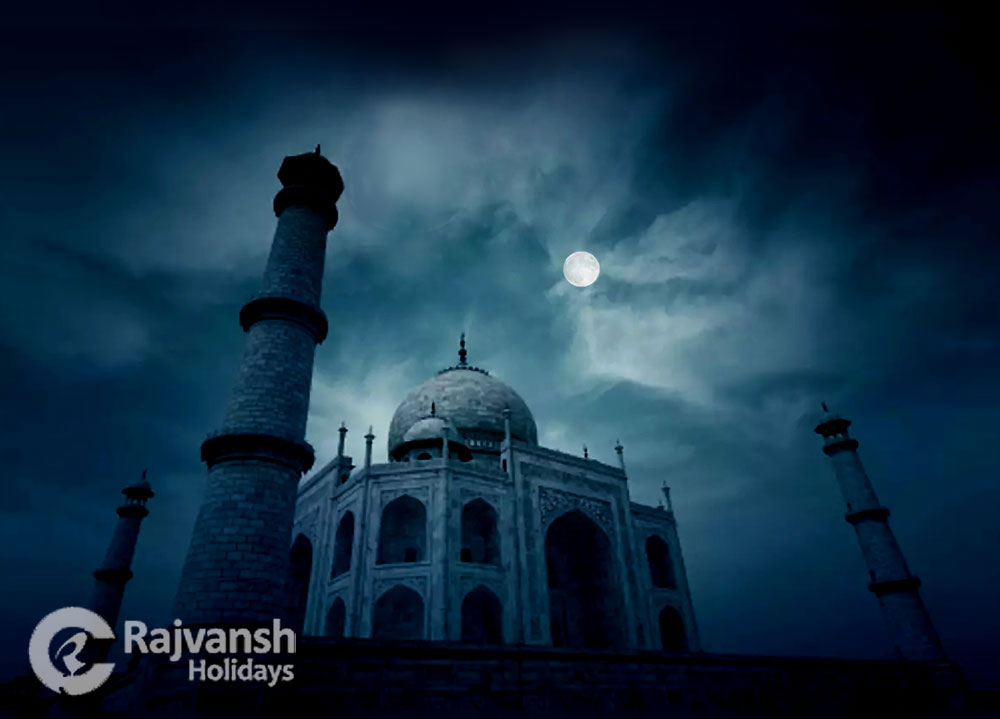
For this, you have to book this Taj Mahal Moonlight Tour in advance by visiting the official government ASI website. Click the below button to book the Taj Mahal Moonlight Tickets.

Or visit directly at https://asi.nic.in/. You can also call or WhatsApp us at (+91 9837044720) for Taj Mahal tickets or for any other travel-related information.
TAJ MAHAL TICKETS (Timing: Sunrise to Sunset)
1. Foreign tourist: Rs ₹1100+ 200
2. Citizens of SAARC & BIMSTEC Countries: ₹540+ 200
3. Domestic/Indian/OCI Cardholder: ₹50 + 200
Taj Mahal Night Viewing Tickets (Timing: 8:30 pm to 12:30 am)
1. Adult: ₹510 (Indian)
2. Adult: ₹750 (Foreigner)
3. Children (3-15 Years) – Indian & Foreigner: ₹500
Please note that booking well in advance is recommended due to the limited availability of tickets.
2. Agra Fort: The Majestic Mughal Dynasty
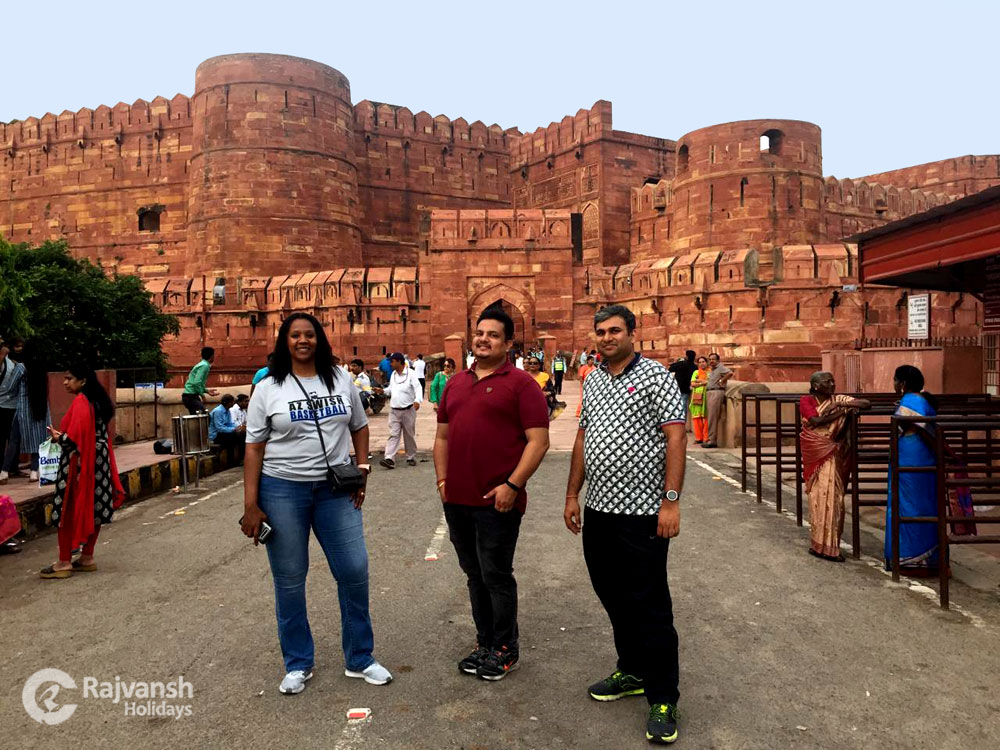
Agra Fort was built during a period of conspicuous invasions and fortifications, when large palaces and forts symbolized authority. Also known as ‘Lal Qilla’, ‘Fort Rouge’, or ‘Qilla-e-Akbari’, it is one of the most important structures in Agra. Agra Fort is located on the right bank of the Yamuna River and is connected to the city’s landmark Taj Mahal through a series of parks and gardens. This was the main residence of the Mughal ruler until his capital was moved from Agra to Delhi in 1638. After the capital was relocated, Agra Fort lost its importance. Agra Fort is now a UNESCO World Heritage Site and a popular tourist attraction visited by tourists from all over the world. UP Tourism will host a nightly light and sound show, providing visitors with a visual treat while offering a glimpse into the monument’s history. However, the sound and light show is currently not in operation.
Agra Fort Entrance Tickets:
Foreign tourist: ₹650
Domestic/Indian tourist: ₹50
3. Mughlai Cuisine: Enjoy the Lip-smacking Mughlai Food
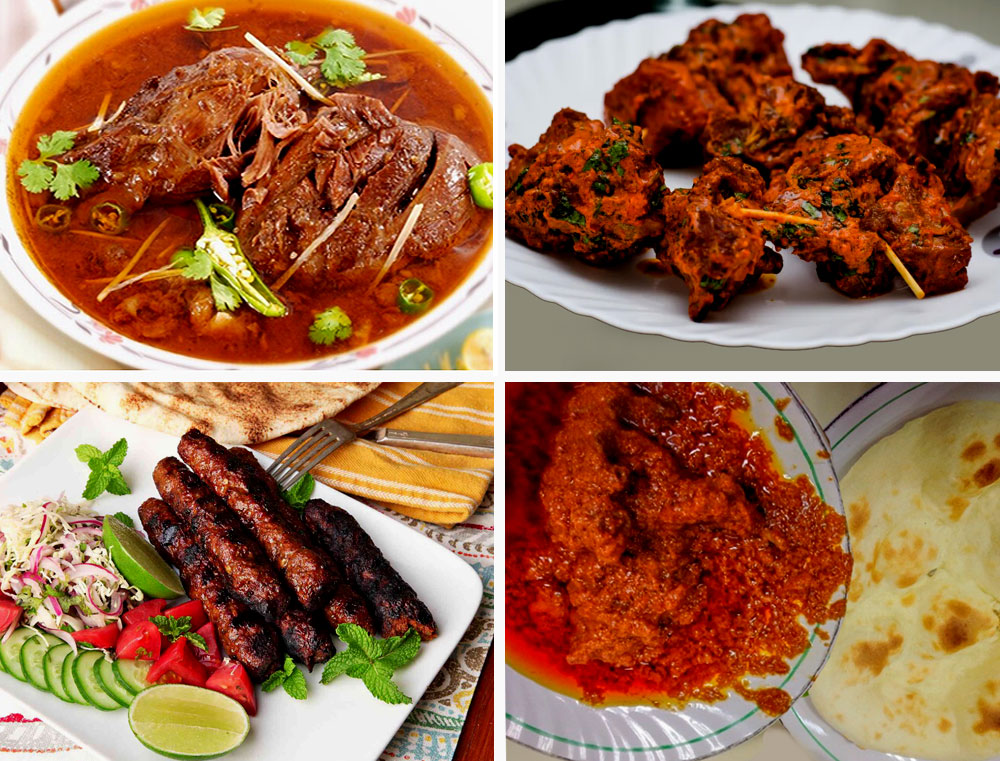
Mughlai cuisine holds a significant place in the culinary history of Agra, owing to the city’s Mughal heritage. Agra, being a former capital of the Mughal Empire, has retained and refined many traditional Mughlai dishes, making it a haven for food enthusiasts seeking authentic Mughlai flavors. Some key aspects of Mughlai food in Agra include:
- Tandoori Delicacies: Agra is known for its delectable tandoori dishes like Tandoori Chicken and Seekh Kebabs, marinated in rich spices and cooked in a clay oven (tandoor).
- Mutton and Chicken Preparations: Rich gravies and curries using slow-cooked mutton or chicken, often featuring creamy and aromatic sauces, are common in Mughlai cuisine.
- Biryani and Pulao: Agra offers aromatic biryanis and pulaos with fragrant rice and layers of meat or vegetables, flavored with saffron, nuts, and spices.
- Kebabs and Tikkas: Seekh Kebabs, Boti Kebabs, and Galouti Kebabs are among the favorites, each with its own unique blend of spices and preparation techniques.
- Sweets and Desserts: Mughlai cuisine in Agra also boasts indulgent sweets like Shahi Tukda (a bread pudding dessert), Petha (a sweet made from ash gourd), and various milk-based sweets like Rabri and Kheer.
Some of the best restaurants in Agra with great food are the Bon Barbeque, Pinch-Of-Spice, Peshawri Restaurant at ITC Mughal Sheraton, Mughal Room at Hotel Clarks Shiraz, Taj Mahal Restaurant, The Silk Route Restaurant, and Moti Mahal Deluxe Tandoori Trail.
4. Petha of Agra – The Famous Delicious Pumpkin Sweets
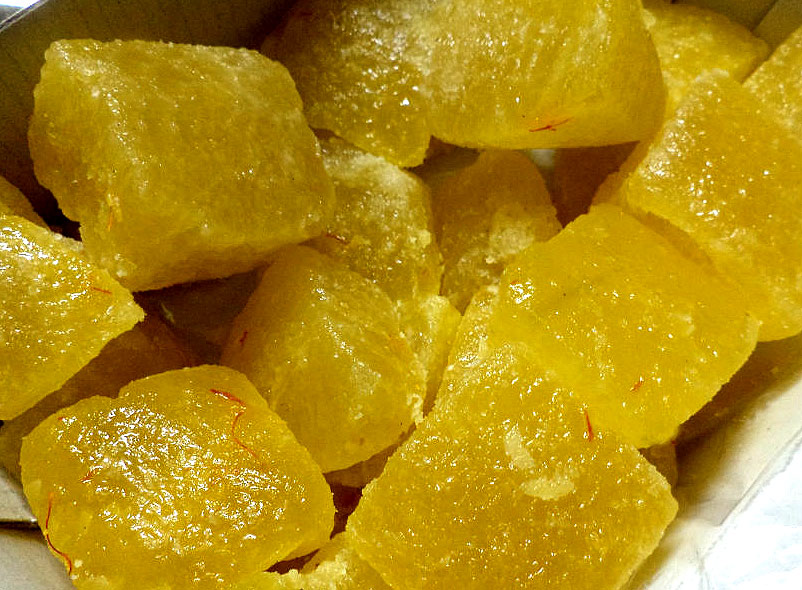
Agra is well-known for more than just the Taj Mahal; it’s also famed for Agra ka Petha, a delectable and well-liked pumpkin dessert. We guarantee you can’t stop at just one agra ka petha, a delicacy made of white gourd that is incredibly fragrant and delicious. According to tradition, it started in Shah Jahan’s Mughal kitchens and was used to feed the laborers building the Taj Mahal.
Agra Petha is a famous Indian sweet delicacy that originated in the city of Agra, located in the state of Uttar Pradesh. It’s a translucent soft candy made from ash gourd (also known as winter melon or white pumpkin), sugar, and sometimes flavored with various ingredients like saffron, cardamom, or nuts.
The process of making Petha involves boiling the ash gourd pieces in sugar syrup until they become translucent and then allowing them to dry. The result is a chewy, sweet treat that comes in different flavors and shapes. Traditional Agra Petha is renowned for its white color, but variations like kesar (saffron) Petha, chocolate Petha, and Pista (pistachio) Petha have become quite popular. This sweet is not just a local delight; it has gained fame across India and internationally as well, becoming a sought-after souvenir for visitors to Agra due to its association with the city’s iconic landmark, the Taj Mahal.
5. Shopping: Enjoy Handicraft’s Shops & Local Old Markets of Agra City
Agra, renowned for the iconic Taj Mahal, offers a vibrant shopping experience, especially for handicrafts and local specialties. Here’s a glimpse into what you can explore in Agra City:
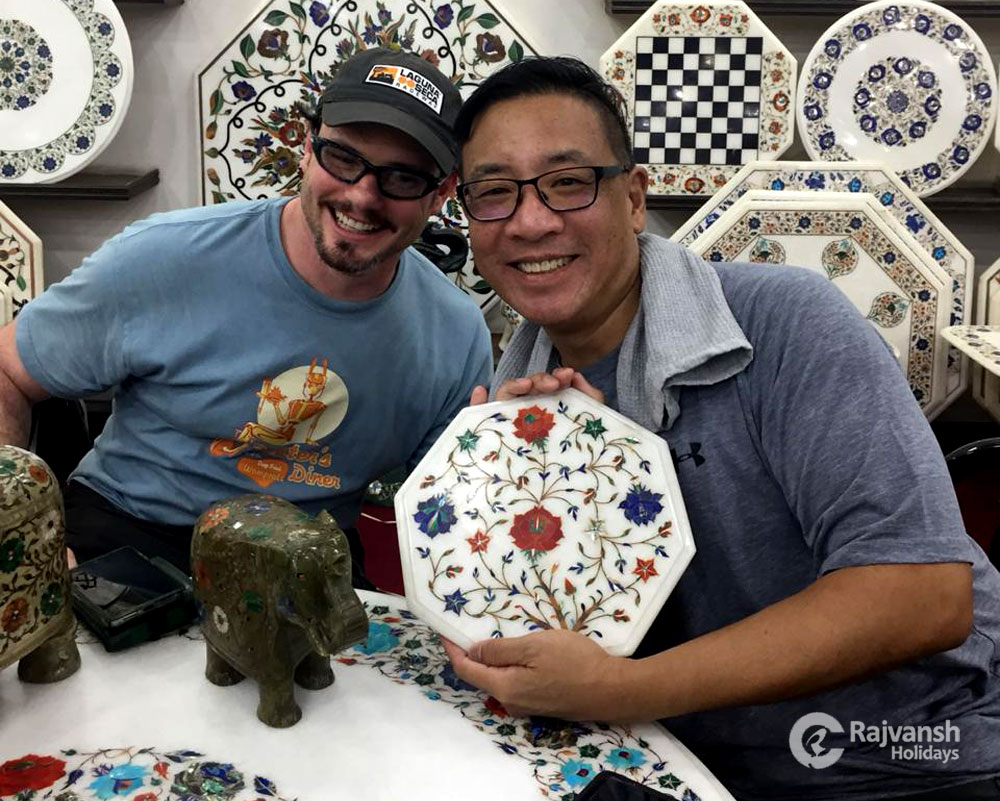
Handicrafts Shopping
- Marble Handicrafts: Agra is famous for its intricate marble work. You’ll find beautifully carved marble items like tabletops, coasters, decorative pieces, and even replicas of the Taj Mahal.
- Leather Goods: The city is also known for its leather products, including shoes, bags, and small leather goods like wallets and belts. Look for high-quality leather items in various designs.
- Embroidery and Textiles: Agra showcases exquisite embroidery work, particularly Zardozi and Chikan embroidery. These are often seen on sarees, suits, and other garments.
- Brassware: Explore brassware items such as decorative plates, lamps, figurines, and utensils. The craftsmanship on these items is remarkable.
Local Markets:
- Sadar Bazaar: It’s one of the oldest and most famous markets in Agra. Here, you’ll find a variety of items, ranging from clothing to handicrafts.
- Kinari Bazaar: Known for its bustling atmosphere and traditional Indian wedding attire, Kinari Bazaar is a great place to shop for fabrics, sarees, and textiles.
- Daresi Bazaar: The Daresi Spice Market in Agra is a bustling marketplace famous for its vibrant array of spices and local produce. Located in the heart of Agra, this market is a sensory delight for those seeking aromatic spices, herbs, and other culinary essentials. The market is known for its extensive collection of pure spices—everything from basic spices like cumin, turmeric, and cardamom to more exotic ones. You’ll find a variety of aromatic and flavorful spices used in Indian cuisine..
- Taj Ganj Market: Located near the Taj Mahal, this market offers a range of souvenirs, marble crafts, and leather goods. It’s convenient if you’re visiting the Taj Mahal.
There are also other famous markets that are well-known street marketplaces, including Shah Market, Raja ki Mandi, Subhash Bazaar, and Shahganj Market. These fairs are well-known for a wide range of unusual and rare crafts that are no longer practiced. One of the greatest places to go street shopping in India is Agra.
6. Fatehpur Sikri: The Ghost City
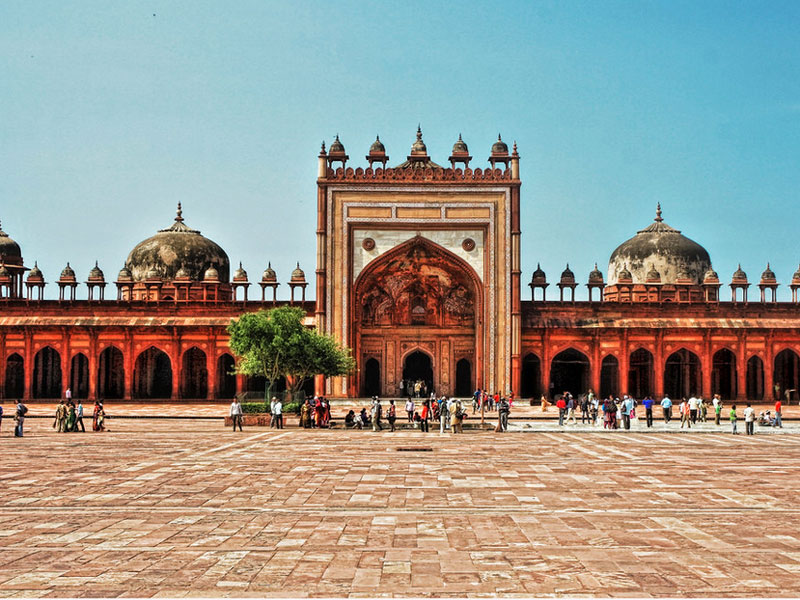
Fatehpur Sikri, located near Agra in the state of Uttar Pradesh, India, is a UNESCO World Heritage Site and a magnificent architectural complex that served as the short-lived capital of the Mughal Empire during the reign of Emperor Akbar. The term “Ghost City” associated with Fatehpur Sikri refers to the deserted aspect of the once-flourishing capital of the Mughal Empire. Fatehpur Sikri was abandoned due to various factors, primarily water scarcity, leading to its designation as a “ghost city” or a deserted ancient city.
Despite being a grand capital, Fatehpur Sikri faced acute water shortages. The sources couldn’t sustain the growing population, forcing the inhabitants to leave. Fatehpur Sikri served as the capital for a relatively short period, from 1571 to 1585, before Emperor Akbar decided to relocate to Agra due to the water crisis.
Places to see in Fatehpur Sikri Fort:
- Buland Darwaza: This grand gateway, known as the “Gate of Magnificence,” stands as an imposing structure and is one of the tallest and most striking gateways in the world.
- Jama Masjid: A beautiful mosque within the complex, known for its intricately designed architecture and stunning courtyard.
- Tomb of Salim Chishti: A white marble mausoleum of the Sufi saint, revered for its serene ambiance and considered auspicious by visitors who often tie threads for wishes.
- Diwan-i-Khas and Diwan-i-Aam: The former was a private audience hall adorned with beautiful carvings, while the latter was a public hall for gatherings and meetings.
- Panch Mahal: A five-story palace offering an excellent view of the surroundings and designed for recreational purposes.
Visitors can explore the well-maintained palaces, mosques, halls, and other structures that stand as testimony to the Mughal architectural brilliance. The deserted aspect of Fatehpur Sikri contributes to its eerie but captivating ambiance, evoking a sense of the past and the once-thriving capital.
Fatehpur Sikri Entrance Fee:
1. Citizens of India, SAARC visitors, and BIMSTEC countries: ₹50
2. Foreigners: ₹610
3. Indian nationals: ₹50
7. Mehtab Bagh: A Charbagh Complex
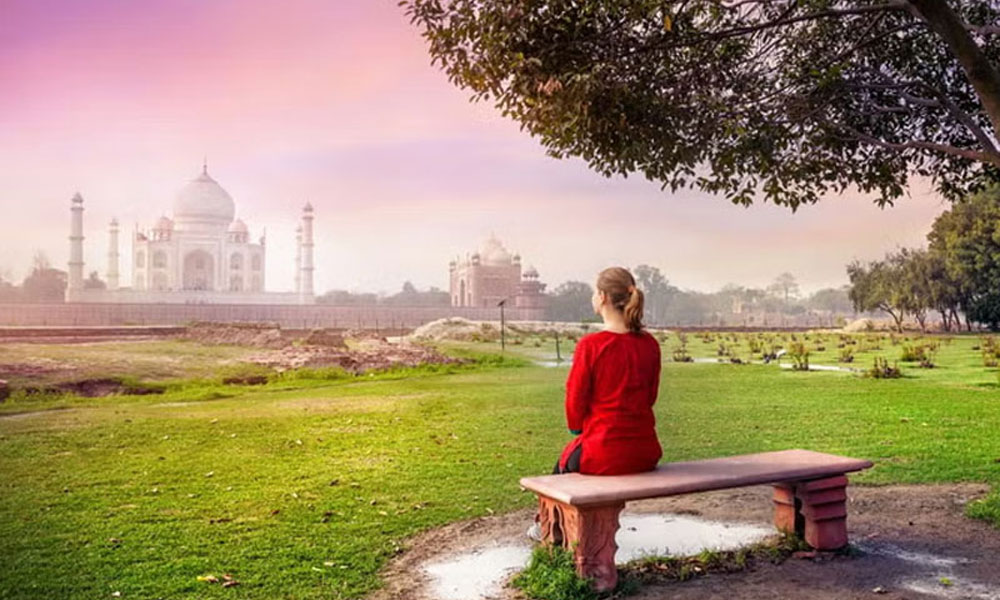
Mehtab Bagh, also known as the Mehtab Bagh Gardens, is a Charbagh complex situated on the opposite bank of the Yamuna River, providing a picturesque view of the Taj Mahal in Agra, Uttar Pradesh, India. “Mehtab Bagh” translates to “Moonlight Garden.”
The garden complex follows the traditional Mughal-style Charbagh layout, divided into four parts by walkways and water channels. It once housed various pavilions, pools, and pathways, though today the layout is relatively simple. It’s believed that Mehtab Bagh was part of the original design for the Taj Mahal complex, serving as a perfect symmetry with the gardens across the river. Some historical documents suggest that it was an integral part of the Taj’s design.
In recent years, efforts have been made to restore and develop Mehtab Bagh to enhance its beauty and preserve its historical significance. It has seen improvements in landscaping, pathways, and amenities for visitors.
Visiting Tips:
- Best Time to Visit: Sunset and sunrise are considered the best times to visit Mehtab Bagh to witness the Taj Mahal gleaming in different lights.
- Photography: It’s a fantastic place for photography, especially for capturing the Taj Mahal from a unique vantage point.
- Accessibility: Visitors can access Mehtab Bagh by road or by a short boat ride across the Yamuna River, providing an alternative view of the Taj Mahal.
8. Mankameshwar Mandir: A Lord Shiva Temple
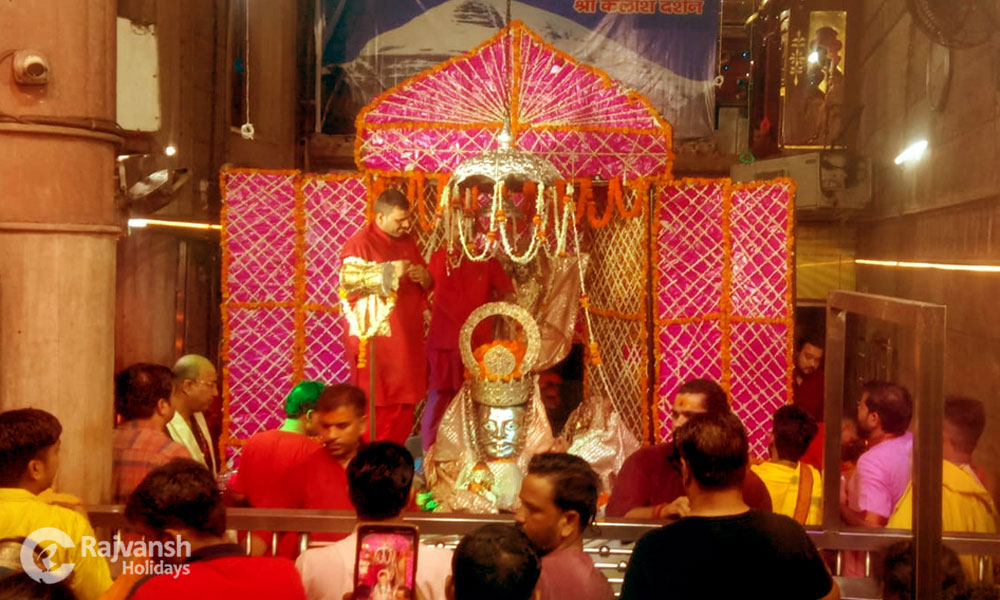
The Mankameshwar Temple is a revered Hindu temple located in the city of Agra, Uttar Pradesh, India. It holds significant religious importance and is dedicated to Lord Shiva, one of the principal deities in Hinduism. The primary deity of the temple is Lord Shiva, worshipped in the form of a lingam, a sacred symbol representing Shiva’s cosmic energy. Devotees visit the Mankameshwar Temple to seek blessings for fulfillment of desires, especially those related to love, relationships, and the fulfillment of wishes (Kama).
The temple follows traditional Hindu temple architecture, characterized by its structure, intricate carvings, and religious motifs. However, it might not be as grand as some of the larger temples in the region. Various Hindu festivals, especially Shivratri, are celebrated with great fervor at Mankameshwar Temple. Devotees gather in large numbers to participate in the festivities and offer prayers.
The temple holds a special place in the hearts of the local residents and draws devotees from Agra and nearby areas who have deep faith in Lord Shiva.
9. Shilpgram: A Cultural & Traditional Crafts Fair in Agra
Shilpgram is a concept used in various parts of India to refer to artisan villages or complexes that promote and showcase traditional arts and crafts. The fair typically showcases a diverse array of handicrafts, including textiles, pottery, woodwork, metalwork, jewelry, paintings, and more. These items are often handcrafted by skilled artisans from different parts of India. The fair provides a cultural immersion, featuring traditional music, dance performances, and live demonstrations by craftsmen, offering visitors an insight into the making of these crafts.
Visitors have the opportunity to shop for authentic and unique handicrafts, souvenirs, and artwork, often directly from the artisans themselves. It’s an excellent chance to support traditional craftsmanship and take home one-of-a-kind pieces.
10. Street Foods
Agra, beyond its stunning monuments, also offers a diverse and delicious array of street foods. Some of the must-try local street foods in Agra include:
- Bedai and Jalebi: Bedai, a type of crispy, deep-fried bread, is often served with spicy aloo sabzi (potato curry) and accompanied by sweet jalebi, a syrupy fried dessert. Try this delightful combination at local street stalls or shops.
- Mughlai Cuisine: Agra offers delicious Mughlai dishes like Tandoori Chicken, Seekh Kebabs, and Chicken Tikka. These can be found in various street-side eateries or restaurants.
- Paratha: Parathas, especially stuffed parathas like aloo (potato) paratha or paneer (cottage cheese) paratha, served with pickles and curd, are a popular breakfast option in Agra.
- Chaat: Agra’s chaat, such as Aloo Tikki Chaat (spiced potato patties), Papdi Chaat (crispy fried dough wafers with chickpeas and tangy chutneys), and Golgappas (pani puri), can be found at various street vendors.
- Lassi: Don’t miss out on trying the famous Agra-style lassi, a yogurt-based drink often flavored with fruits or spices, providing a refreshing treat in the city’s bustling streets.
- Kachori: Agra offers spicy and flavorful kachoris, stuffed with lentils or peas, served with chutneys. Bedhai and Kachori in the mornings are a local favorite.
Please feel free to contact us at any time for any travel information, tour bookings, tickets, transportation, or hotel bookings in India. Just call or WhatsApp us at +91 98370 44720. You can also visit our official website: www.tajmahaltourguide.com

